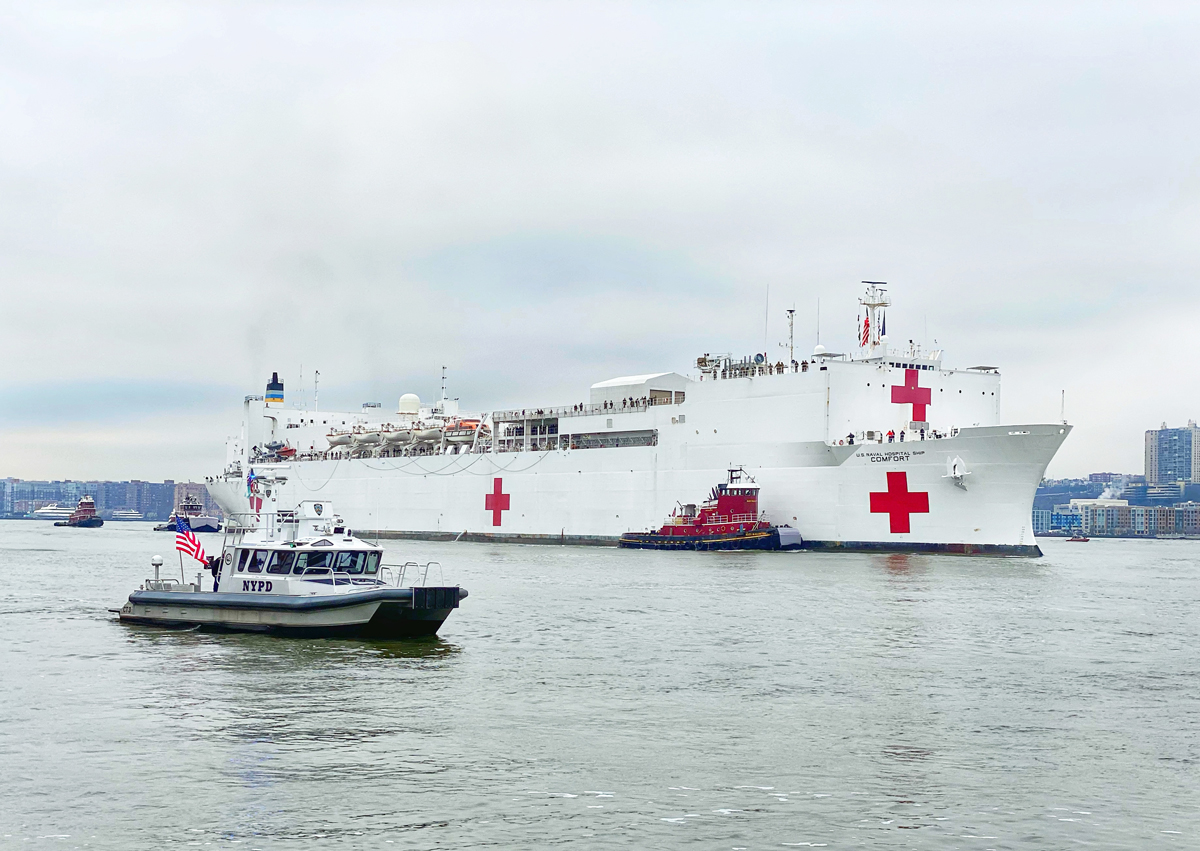This month marks the grim two-year anniversary of the COVID-19 pandemic changing life as we knew it. New York emerged as the original epicenter of the pandemic in the U.S.
To date, New York State has had nearly 5 million confirmed COVID cases and more than 67,000 deaths. Those numbers are chilling and behind them are real New Yorkers: family members, friends, coworkers, neighbors.
Certain images and memories from the early days of the pandemic are indelible. Here in New York City, the normal intense energy and hustle-bustle turned into an eerie ghost town. Zoom calls were punctuated by ambulance sirens wailing in the background. A field hospital was set up in the middle of Central Park. A front-page photo revealed health care workers wearing plastic garbage bags as gowns. A Navy hospital ship docked on the western piers of Manhattan, though it went almost entirely unused.
As painful as those memories are, we can’t forget them. Spanish philosopher George Santayana is credited with the aphorism, “Those who cannot remember the past are condemned to repeat it,” which he wrote in 1905. In a 1948 speech to the House of Commons, Winston Churchill paraphrased, “those who fail to learn from history are condemned to repeat it.” She’s not a famous statesman, but a friend of mine said recently, “At a minimum, can we at least make new mistakes instead of the same old ones?”
Santayana, Churchill, and my friend all had it right. We need to learn our lessons from past mistakes.
The main lesson: our public health infrastructure was woefully unprepared. For decades, we as a nation and as a State had disinvested in public health. In 2018, only 2.9% of total U.S. health spending went toward public health and preventive services. When COVID hit, we paid a terrible price for that neglect. We lacked adequate epidemiological surveillance. We lacked testing capacity. We lacked contact tracing. We lacked adequate supplies of personal protective equipment like masks and gowns. We lacked clear and coordinated public messaging. These are all elements of public health 101 — bread and butter functions that are essential to any outbreak of infectious disease. But we weren’t ready.
Despite the obvious and unnecessary devastation from that lack of preparedness, we keep repeating the same mistakes. When the Omicron variant first raced through the U.S. in December 2021, it was nearly impossible to find tests or high-quality masks. Just last week, Congress failed to approve additional pandemic funding that would have given the federal government the resources to invest in more testing, vaccines, and therapeutics. Nearly 1 million Americans are dead from COVID; have we learned nothing?
With COVID cases and deaths again trending upward in Asia and Europe, it’s clear that the pandemic is not over. We are all tired of it, but COVID isn’t done with us. We need adequate tools and resources to fight the ongoing pandemic. And we must prepare for the next inevitable public health emergency.
Here at home, we are making a bit of progress. A new report by Trust for America’s Health examines states’ performance on emergency preparedness. New York State’s overall performance improved between 2020 and 2021; we’re now in the middle of the pack of states and have moved up from the lowest tier.
We still have a long way to go. According to the New York State Association of County Health Officials (NYSACHO), budget cuts across all of New York State’s 58 local health departments over the past decade add up to more than $150 million. As a result, public health departments were stretched thin even before the pandemic. Between 2015 and 2020, local health department staff decreased by 7% while New York State’s population grew by 3%. Even more alarming, nearly 25% of local health department leaders have retired or left their jobs since February 2020. According to NYSACHO, 90% of local health departments in New York State don’t have enough staff to address basic community health needs. More than 1,000 additional full-time staff are needed across New York to provide adequate services.
I’m encouraged that New York may rise to the challenge. Recent budget proposals by the Governor and legislature all include additional funding for public health. That boost in funding could support increases in State aid for local health departments’ core work; health care worker retention bonuses and nurse loan repayment programs that could shore up the public health workforce; and additional resources for prenatal and postpartum care, mental health supports, and substance use treatment.
When it’s functioning well, public health can be almost invisible. Too often in the U.S., we take for granted that we have safe drinking water, that our kids are protected from lead poisoning, that disease outbreaks can be monitored and contained. But protecting public health requires careful planning and preparation, it requires money, and it requires a robust and skilled workforce.
On this anniversary of the pandemic, one way to honor those who’ve died from COVID is to learn from history. Stop repeating the same mistakes over and over. Don’t neglect public health — because we will surely regret it. Instead, let’s invest in public health and be better prepared the next time. We’ve learned things the hard way and we can do better.
By David Sandman, President and CEO, New York Health Foundation
Published in Medium on March 17, 2022
Photo: The U.S. Navy hospital ship USNS Comfort sails into New York Harbor as part of COVID-19 pandemic relief efforts in New York City in March 2020. Photo credit: nycshooter


